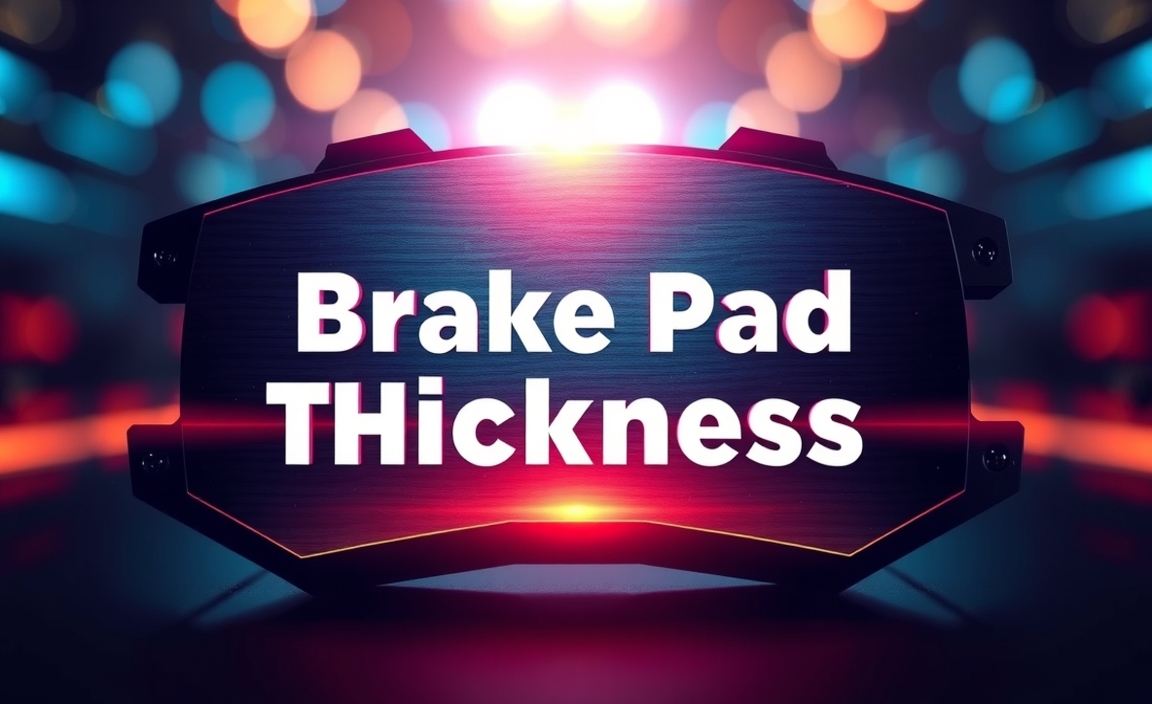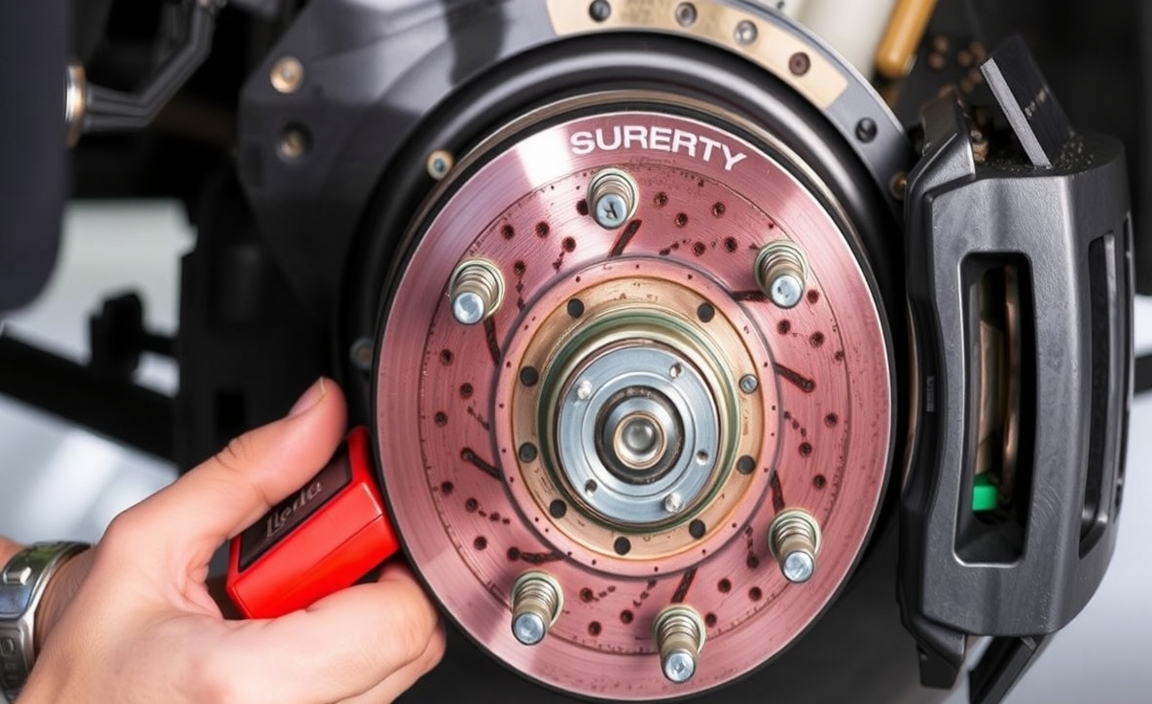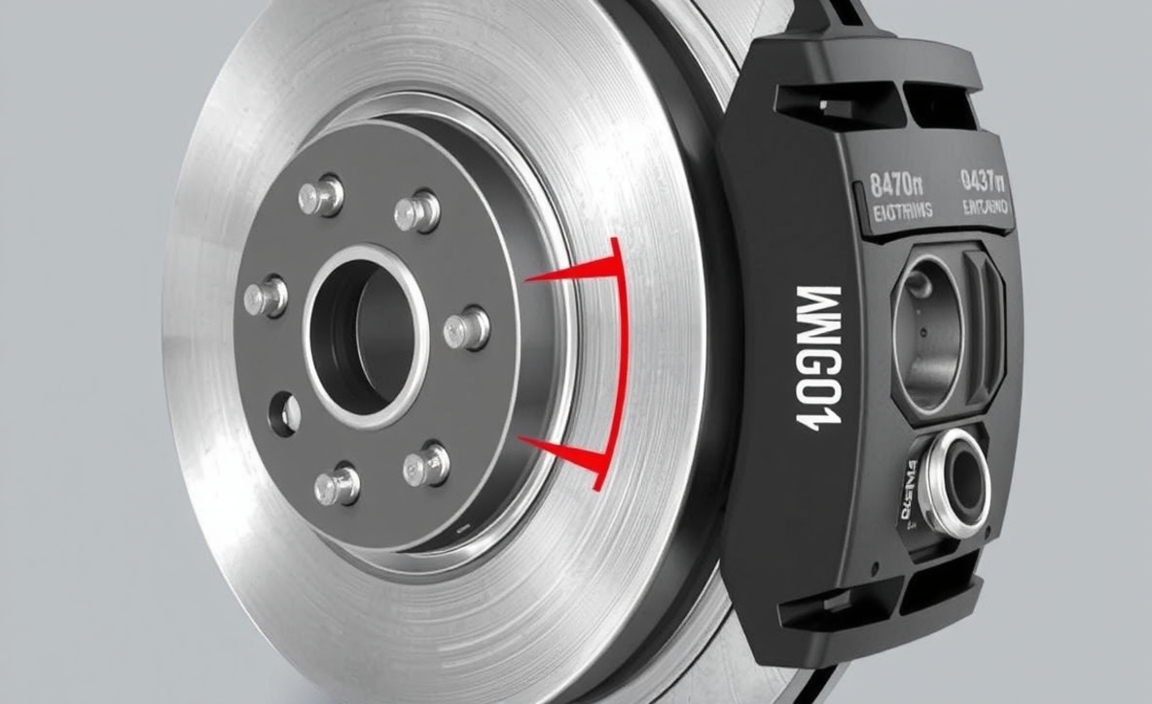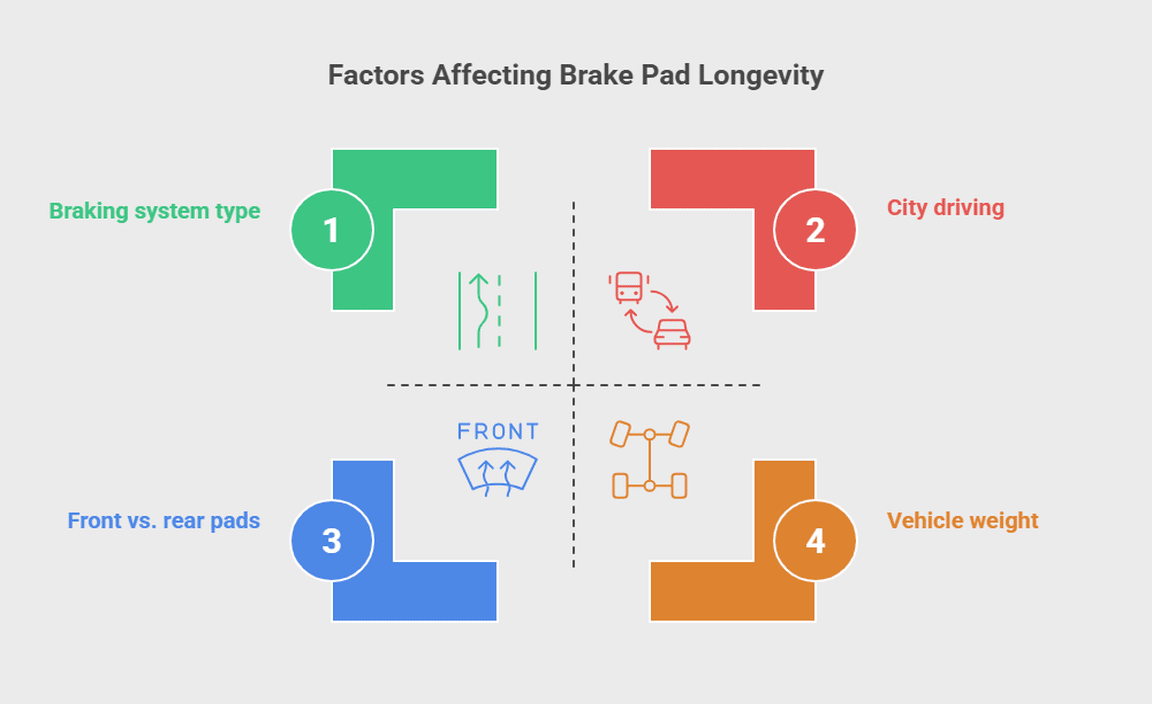Ever pressed the brake pedal and wondered if your car would stop in time? That hesitation often points to a hidden issue—brake pad thickness. Your brake pads are a vital part of your vehicle’s braking system.
They’re made from friction material designed to press against the brake disc (or brake rotor), helping your car slow down or come to a complete stop. Over time, this friction material wears down, reducing braking performance and increasing your risk on the road.
Whether it’s your front or rear pads, maintaining the right pad thickness is crucial for safety, smooth driving, and avoiding costly damage to the brake components. Ignoring worn brake pads can even lead to rotor damage, brake fade, or full brake failure. That’s why regular brake inspections and timely replacements are more than just maintenance—they’re protection.

Importance Of Brake Pad Thickness

Brake pads are critical brake components that work with your vehicle’s braking system to create the friction needed to stop your car safely. Maintaining the right brake pad thickness is key for consistent stopping power, especially during emergency braking.
When pads wear down too much, it increases the risk of brake fade—a condition where heat and continuous use reduce braking efficiency. Thin or worn pads can also damage the brake rotor, leading to more expensive repairs. In some cases, neglecting brake pad wear can even cause full brake failure.
That’s why it’s smart to check pad thickness regularly using a brake pad gauge. For vehicles with brake shoes, especially in rear brakes or drum brakes, keeping an eye on pad material wear is just as important for safe and reliable braking.
What Is The Acceptable Thickness Of Brake Pads?
The acceptable thickness of brake pads plays a big role in your vehicle’s braking system performance. New brake pads usually start at around 10–12mm, depending on the pad material and vehicle type. Experts recommend replacing them when the pad thickness drops to about 3–4mm.
At this point, the braking efficiency starts to decline, especially under heavy use or sudden stops. Waiting until the pads reach the minimum thickness—typically around 3mm—can put stress on the brake rotor and other brake components, increasing the risk of brake failure.
Impact On Vehicle Safety
Brake pad thickness directly affects how safely and effectively your car stops. When the pad material becomes too thin, it reduces your braking performance and increases stopping distances, especially during emergencies. This not only endangers you but also everyone else on the road.
As pads wear down, they expose more of the brake pad backing plate, which can scrape and damage the brake disc or brake rotor. In turn, this puts extra strain on the brake caliper, potentially leading to costly repairs or full replacement.
If left unchecked, worn rear pads or front pads can also damage brake shoes in drum setups and disrupt the entire vehicle’s braking system. Even your brake lines can be affected if the braking pressure isn’t distributed correctly due to pad wear. That’s why routine brake inspections are essential for maintaining safety and extending the life of your brake components.
Quick Safety Risks of Worn Pads:
- Increased stopping distance
- Overheating and brake fade
- Damage to brake calipers and rotors
- Risk of full brake failure
Compromised braking efficiency in emergencies
Signs of Worn Brake Pads
Your car gives signs when the brake pads start to wear. Listen closely when you press the brake pedal. A sharp screech or squeal usually means the pad thickness is low. This sound often comes from a built-in wear indicator rubbing against the brake disc.
If you hear a grinding noise, act fast. That likely means the friction material is gone. Now, the metal presses directly on the brake rotor. This can cause costly damage. You may also feel shaking or pulsing in the brake pedal.
That could mean uneven pad material wear or a warped rotor. Some brake pads include a rubberized coating to reduce these vibrations. But once that coating wears off, the shaking gets worse.
If the brake feels soft or slow to respond, the pads may be too thin. In some cases, air or moisture in the brake lines causes this. Most modern cars will also show a dashboard light for brake pad wear. If the parking brake stays on or there’s an issue, it might trigger a warning, too.
Quick Signs to Watch For:
- Squealing, screeching, or grinding brakes
- Vibration or pulsing brake pedal
- Soft, slow, or unresponsive brake feel
- Dash warning lights for brake pad wear or parking brake
Poor braking performance and longer stops
Watch and listen often. These small signs help you catch a worn brake pad before it causes bigger trouble. A quick check could save your braking system from costly repairs.
Measuring Brake Pad Thickness
To accurately measure brake pad thickness, use a brake pad gauge. This tool gives you a precise reading of how much material remains on your brake pads. A visual inspection is another simple method. You can remove the wheel to directly observe the pad material and check its condition.
If you’re unsure, many brake services offer free inspections during regular maintenance, like oil changes or tire rotations. Regular checks help catch any issues early and maintain your braking system’s effectiveness.
Minimum Safe Brake Pad Thickness

New brake pads usually measure between 10 to 15 millimeters in thickness. As the pad material wears down, it’s important to replace it when the thickness drops to 3 to 4 millimeters. This is the recommended range for optimal braking performance.
The absolute minimum brake pad thickness for safe driving is 3 millimeters. Going below this can lead to serious issues. If the pads get too thin, they can cause damage to the brake rotor, which can significantly increase repair costs. Regularly monitoring brake pad wear is essential to avoid these problems and maintain the safety and efficiency of your braking system.
Is 4 mm OK For Brake Pads?
Yes, 4 mm is still within the safe range for brake pad thickness. It’s recommended to replace brake pads when they reach 3 to 4 mm. At this thickness, you still have enough material for braking efficiency, but it’s a good idea to start monitoring them closely for further wear.
Is 3 Mm On Brake Pads OK?
At 3 mm, the brake pads are at their minimum thickness. While they’re still functional, it’s time to think about replacing them soon. Continuing to use brake pads at this thickness could lead to damage to the brake rotor and decrease braking performance.
Different Brake Pad Materials
The material of your brake pads plays a crucial role in their performance, noise levels, and lifespan. Metallic brake pads are made from a mix of metals, providing excellent durability and heat resistance. They are ideal for high-performance vehicles and heavy braking, but they tend to wear down brake rotors more quickly.
On the other hand, ceramic brake pads offer a quieter and cleaner braking experience. They produce less dust and are more durable than organic pads, providing a smooth feel with lower noise. Organic brake pads are made from softer materials and tend to be more affordable. However, they wear out faster and may not perform as well in extreme conditions.
Brake Pad Materials at a Glance:
- Metallic Pads: Durable, heat-resistant, but may wear rotors faster.
- Ceramic Pads: Quiet, clean, smooth braking feel, long-lasting.
- Organic Pads: Softer, cost-effective, but wear out faster.
Choosing the right brake pad material depends on your driving style, vehicle type, and priorities for noise, cost, and performance.
Factors Affecting Brake Pad Longevity

Several factors affect the life of your brake pads. City driving tends to wear them down faster. Frequent stops require more braking force. In contrast, highway driving involves fewer stops, so it’s easier on your brake pads. Heavier vehicles need more force to slow down, which wears out the pads quicker.
Front pads and rear brake pads wear at different rates based on the vehicle. Some cars use the front brakes more, while others distribute the load more evenly. The type of braking system also matters. Disc brakes wear pads evenly, while drum brakes can cause uneven wear.
Key Factors That Affect Brake Pad Longevity:
- City driving: Frequent stops wear pads faster.
- Vehicle weight: Heavier vehicles require more braking force.
- Front vs. rear pads: Pads wear at different rates depending on the vehicle.
Braking system type: Disc brakes wear pads evenly; drum brakes cause uneven wear.
These factors impact when you need to check or replace your brake pads. Understanding them helps maintain a safe and effective braking system.
Replacing Brake Pads
When your brake pads approach the minimum thickness, it’s crucial to replace them immediately. Delaying the replacement can compromise your vehicle’s braking system and safety. When selecting replacement brake pads, always take your vehicle’s specific braking system into account.
For example, heavier vehicles may need more durable pads. Along with replacing the pads, it’s important to inspect other brake components, such as the brake caliper, brake fluid, and brake shoes. Ensuring these parts are in good condition will keep your braking system performing at its best and prevent future issues. Regular brake system checks can save you from costly repairs down the road.
Professional Brake Pad Services
Certified mechanics have the expertise to accurately inspect and replace brake pads and other brake components. They use specialized tools and knowledge to ensure your braking system operates safely and efficiently.
While dealership services tend to be more expensive, they offer in-depth expertise, especially for specific vehicle types and models. Dealerships can provide tailored service and use manufacturer-approved parts. On the other hand, local auto shops often offer more affordable options.
Many local shops can install new brake pads quickly, often while you wait, making them a convenient choice for routine brake pad replacement. Regardless of where you go, ensure your braking system gets the care it needs to maintain optimal performance and safety.
Conclusion
Brake pad thickness might seem like a tiny detail, but it’s a huge part of keeping your ride safe. Think of it like the soles of your shoes- once they’re worn thin, you’re going to slip. Don’t wait until your car tells you it’s too late. Regular brake inspection, proper pad maintenance, and using the right brake pad thickness gauge can save you a lot of trouble- and maybe even your life.
FAQs
Q1: How Often Should I Check Brake Pad Thickness?
Check your brake pad thickness every 10,000 to 15,000 miles. You should also inspect them during routine services like tire rotations. Regular checks help you spot wear early and avoid costly damage.
Q2: Is It Safe To Drive With 3mm Brake Pads?
Yes, you can drive with 3mm brake pads, but it’s not safe. This thickness is at the warning level. Replace the pads soon to keep your braking system working well and to prevent rotor damage.
Q3: Do Rear Brake Pads Wear Out Faster Than Front Ones?
No, rear brake pads usually don’t wear out faster. Front brake pads handle most of the stopping force, so they wear quicker. Still, check rear pads regularly, especially if you tow or carry heavy loads.
Q4: What Happens If I Ignore Worn Brake Pads?
Worn brake pads can cause serious problems. They may damage your brake rotors, reduce stopping power, and increase the risk of full brake failure. Ignoring them can lead to expensive repairs and unsafe driving.
Q5: Are Ceramic Brake Pads Better Than Metallic Ones?
That depends on your needs. Ceramic brake pads are quiet and clean with smooth stopping power. Metallic brake pads are stronger and better for high heat but may be noisy and rough on rotors.
Q6: How Can I Measure Brake Pad Thickness?
Use a brake pad thickness gauge to get a clear reading. Many tools show color zones—green means safe, yellow means caution, and red means replace now. You can also remove the wheel for a visual check.